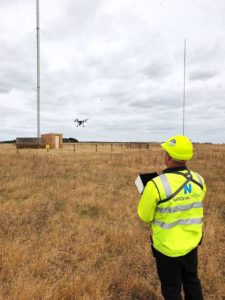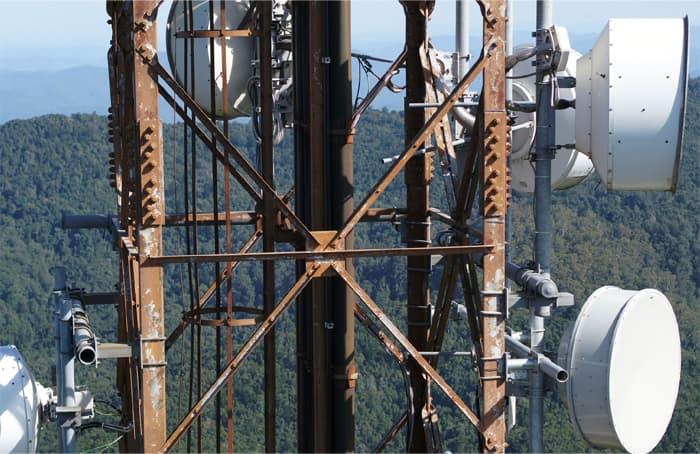Broadcast Australia
National Drones recently worked with Broadcast Australia, a world leader in the design, deployment and operation of Digital Broadcast Networks.
Broadcast Australia delivers DTV services nationally on behalf of the ABC and SBS. With 391 sites across Australia, understanding the condition of their assets and structures is vital for maintenance planning into the future.
With a vast network of assets spread right across Australia, it is important for Broadcast Australia to understand the physical condition of their network, to ensure optimum performance long into the future. Early identification of potential problems can ensure that outages and downtime are drastically reduced in turn driving efficiency in their operations and increasing customer service levels.
Other case studies
The challenges
Broadcast Australia’s network consists of a large number of structures across the country, in the form of monopoles, guyed masts, freestanding towers, and hybrid structures.
With heights ranging from 15 metres to 204 metres tall, Remotely Piloted Aircraft offer a viable alternative to traditional inspection techniques. Historically, Inspection Technician teams with rigging qualifications climb the structures and provide a photographic record and written report on the condition.
Whilst this has been a useful way of completing inspections in the past, riggers climb through the centre of the structure, which makes viewing external components more difficult.
By utilising drone based inspections – high resolution imagery of the entire asset is able to be reviewed, giving valuable data on the condition of the structure in a shorter period of time, with safe conditions for workers and less disruption for customers.
The solution
- To ensure that the entire structure was able to be captured, a specific capture methodology was implemented, consisting of a vertical flight profile, with sufficient overlap between images. This allowed the entire asset to be viewed from multiple angles by the Structures Manager and engineering teams from the safety of their desks.
- To complement the capture methodology, a software solution was developed to assist in easy desktop navigation of the tower structures, and allow review, annotation and collaboration on areas of interest. The software provides the user with a safe, easy and accurate way to review their asset without needing be on-site.
The results

Flight operations were conducted using multi-rotor aircraft, with ground testing undertaken to ensure the RPA of choice was able to operate in an environment with high RF interference.
In addition to this, approvals needed to be obtained from the Civil Aviation Safety Authority to allow operations to occur above 400 feet above ground level. In the case of some towers, they stood at 670 feet above the ground.
National Drones teams have now completed inspections on over 400 of these vertical assets since 2018.
Ultra-high resolution imagery was captured of every aspect of each site, including insulators, guy wires, top loading wires and the structures themselves. In addition to this, imagery of the site huts was also captured.
This imagery was analysed to identify issues with bolts, paint and steelwork, and used for asset identification and maintenance planning. For future surveys, it is envisaged that deep learning will be utilised to identify areas of interest.
The benefits
Increased visibility
Remotely Piloted Aircraft give the ability to capture data and the condition of the entire structure. Traditional methods have relied on select imagery of areas of interest.
Safety
Traditional inspections utilised technicians with rigging qualifications. Remotely Piloted Aircraft remove the climbing, and the risk from the inspection component of the survey.
Asset lifecycle monitoring
Access to imagery and data over the entire structure allows a database to be built, allowing the condition of the asset to be closely monitored over time. By building on previous inspections and linking additional data sources, an accurate picture of the asset lifecycle can be created.
No downtime
During traditional inspections due to the high RF output, outages need to be put in place which affects customers. By utilizing drone inspections there is no need for outages and no customers affected.
Speed
Drone Surveys can typically be completed in half to a quarter of the time of traditional inspections.

We are investigating new technology to ensure tasks reduce the OHS risk to our staff, minimise impact to our customers and deliver efficiencies within our business. We are working with National Drones to investigate any opportunities to deliver this.
john smith ceo broadcast australiaDownload this Case Study
You can download this case study by filling out the form below or go back and view more case studies.